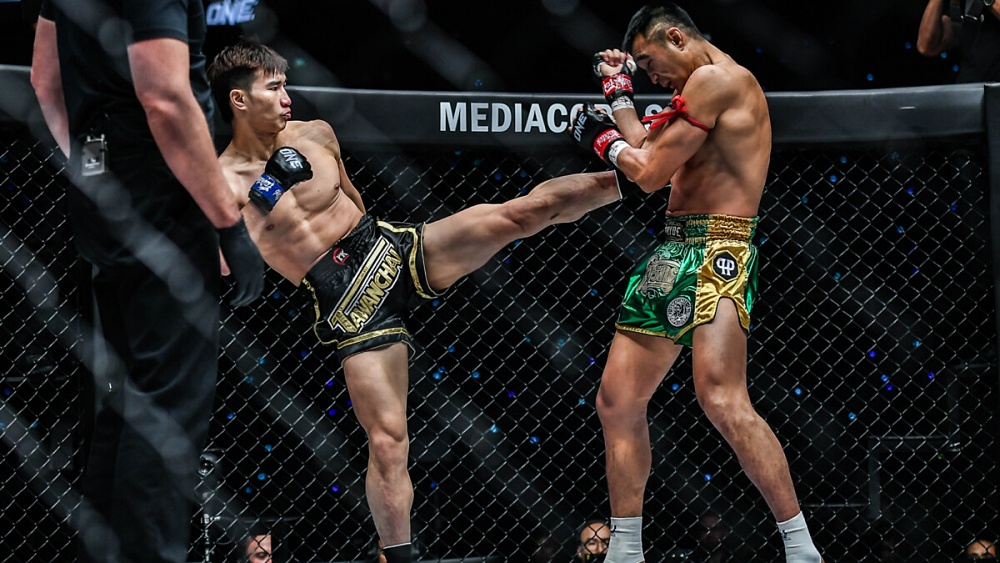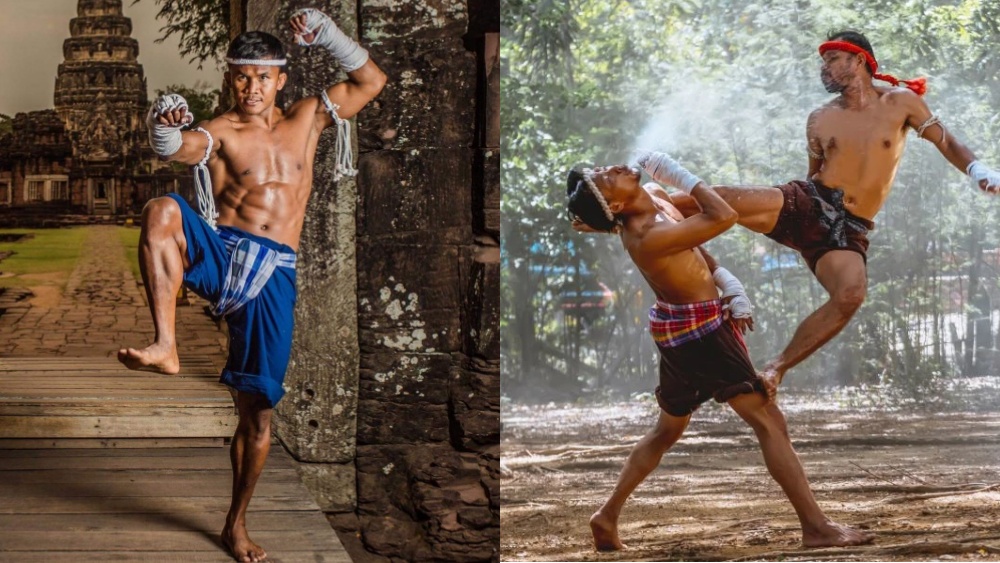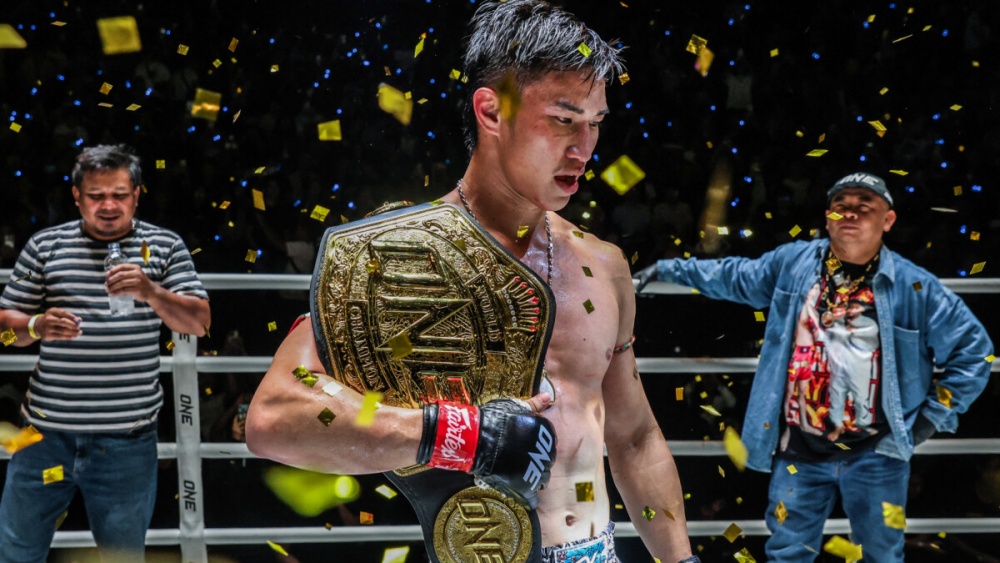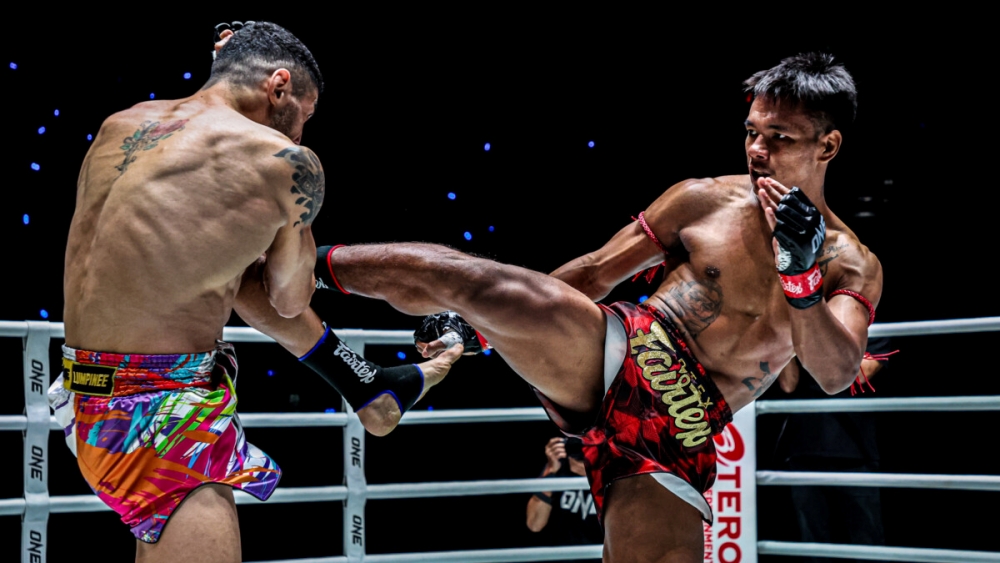Tawanchai PK Saenchai is a dynamic Muay Thai fighter and current ONE Featherweight Muay Thai World Champion. Despite being only 25 years old, he is already a veteran of the fight game, making his Lumpinee Stadium debut when he was fourteen! After joining ONE Championship in 2020, Tawanchai worked his way up the rankings, eventually dethroning Petchmorakot Petchyindee to become the ONE Featherweight Muay Thai World Champion. Today, Evolve Daily is pleased to share a guide on how to fight like Tawanchai PK Saenchai.
Tawanchai’s teep is reminiscent of Samart Payakaroon’s hybrid side teep. Many fighters that train with Saenchai or at Jocky Gym use a version of the hybrid side teep; however, few fighters can use it so effectively.
Distance control and power are the aspects that separate Tawanchai’s side teep from the standard teep thrown by most other Muay Thai fighters. Tawanchai will chamber his leg identically to a normal teep, then explode at the very end of the kick. He rotates his rear foot so his heel is pointed at his opponent, giving his side teep a deceptively long range. He adjusts the amount of rotation depending on the distance between him and his opponent.
Like Samart, he flashes this teep out regularly, akin to how a boxer would use their jab. Tawanchai’s lead leg dexterity allows him to keep throwing his side teep over and over again, keeping his opponent out of range, while also draining their stamina and inflicting damage. The rotation and extension at the end range of Tawanchai’s side teep also add explosive power, in addition to pushing his opponents off balance.
Both Samart and Tawanchai teep with their entire back foot, including the heel, on the ground. This is to add stability and balance, which allows you to push your opponent back more easily. Above is a video of Samart Payakaroon himself teaching and demonstrating his legendary teep.
Left Roundhouse Kick
Tawanchai’s signature strike is his left roundhouse kick. He possesses incredible power and can generate a massive amount of torque. One unique aspect of Tawanchai’s left kick is his hip rotation. Although Tawanchai’s left kick is often thrown with the intent to knock out his opponent, he rotates less than most fighters do on their roundhouse kick. This makes his kick slightly less powerful, but giving him the ability to follow up or evade after kicking; this is especially important as Tawanchai often throws single kicks without a setup.
Another unique aspect of Tawanchai’s kick is his initial pre-step to load his left side. Many gyms and coaches advise against pre-stepping since it telegraphs the kick and allows your opponent to counter. However, pre-stepping does add stability and strength to your kick, making it a trade-off for fighters who are quick and explosive. Tawanchai’s left kick comes out so swiftly, that even with the telegraphing of the pre-step, opponents often cannot evade or block the kick in time.
Tawanchai tends to pre-step with a flat foot when throwing single power kicks. Like his hybrid side teep, standing flat-footed while kicking can add stability and increase the blunt force impact. This is especially useful for a southpaw fighting in an open stance matchup; the southpaw’s left kick can batter the orthodox opponent’s right arm, effectively taking away their power punches.
Another aspect that makes Tawanchai’s left kick so effective is his foot placement after he retracts his kick. Instead of bringing his left foot back to where he originally was, he will often bring it back further and slightly off to the left. This gives him the inside angle, where he can choose to attack with his lead side between his opponent’s guard, or to move further inside, making his opponent turn to face him and leading them into his strikes.
When Tawanchai kicks, he opts to swing both of his arms to generate maximum force. This compensates for the under-rotation and aids in his balance and movement before, during, and after he kicks.
As you can see, Tawanchai has quite the unique left roundhouse kick from a southpaw stance. Combining the elements discussed above is how he can break arms and score knockouts with leg kicks. Gabriel Varga further explains the details of Tawanchai’s kick in the video above.
The “southpaw advantage” can be a controversial topic amongst the fight community. Some will say that it gives a fighter a clear advantage, while others wholeheartedly disagree. Whatever your personal opinion is, it is clear that southpaws have a different set of techniques they employ in an open stance matchup. While there is no inherent advantage in being a southpaw, southpaws indeed spend the majority of time training to fight in an open stance matchup, whereas orthodox opponents primarily train to deal with a closed stance matchup.
When analyzing high-level southpaw fighters, such as Saenchai, Samart, Samkor, and Tawanchai, many similarities emerge. Southpaw Nak Muay often uses the side teep due to the opposing body angles formed in an open stance matchup. A traditional teep will often slide off the opponent’s body, but a side teep can land squarely. A side teep from a southpaw is also especially effective due to the extra distance between opponents in an open-stance matchup.
Another aspect of the southpaw advantage in Muay Thai is how the left kick lines up with an opponent’s body in an open stance matchup. A southpaw with a powerful roundhouse kick can continuously blast their opponents with it with little repercussion. If the orthodox opponent does not block, they will take a power kick to the liver or chin, which can result in a knockout. If they choose to block the kick, their forward momentum will be halted and their power side arm will be damaged, making their power punches less effective.
Many high-level southpaw Nak Muay will also break conventional wisdom by circling to their left- towards their opponent’s power side. Although this may seem counterintuitive, circling toward your opponent’s power hand in an open stance can set up counters or your offense. Tawanchai will bait his opponent into turning to face him as he circles inside, only to quickly pivot and change direction, gaining the outside angle. From here, he is free to land a power strike with his left side right between his opponent’s guard. Tawanchai can also circle deep inside, slipping his opponent’s punches while setting up his lead side to land strikes between his opponent’s guard.
Conclusion
Tawanchai PK Saenchai is a highly skilled World Champion that anyone can learn from. With a deceptively simple style, Tawanchai is able to dominate his opponents with a solid foundation in the basics of Muay Thai. Regardless of your fight style, adding elements of Tawanchai’s striking game to your training will elevate your skill. Let us know which techniques discussed above work best for you!
You may also like:
4 Reasons Why You Rarely See An Undefeated Muay Thai Champion

















